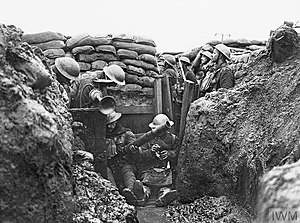
There will be many ways in which this country – next year – will mark the centenary of the First World War and one of them could involve many fans of the Virtual Museum of Bath.
Earlier this year, Imperial War Museums and brightsolid, the online publishing and technology arm of publishing group DC Thomson, announced they were to work in partnership to create Lives of the First World War – an innovative and interactive digital platform to mark the anniversary.
Lives of the First World War will hold the stories of over 8 million men and women who served in uniform and worked on the home front. It will be the official place for communities across the world to connect, explore, reveal and share even more about these people’s lives.
This innovative platform will bring fascinating records from museums, libraries, archives and family collections across the globe together in one place. The team behind Lives of the First World War are working with national and international institutions and archives to make this happen.
Over the course of the centenary, Lives of the First World War will become a dynamic, permanent digital memorial – a significant digital legacy for future generations. However the Imperial War Museums needs help from the public to explore the digital documents, to link them together and to start telling the stories of those involved in the conflict.

At the heart of the Lives of the First World War on-line ‘platform’ will be the life stories of more than 8 million individuals. But these people did not live, work and die alone. They had shared experiences before, during and after the war.
The Lives of the First World War platform will enable life stories to be grouped together into ‘communities’. Examples of communities could include those named on a village memorial, members of a particular battalion or unit, staff at a factory, players for a football team or the life stories from a particular museum, library or archive. Some individuals may feature in more than one community.
Community Pages
Subscribers to the Lives of the First World War platform will be able to create and populate communities with the group of life stories that they are interested in. Subscribers can establish several communities if their projects and interests require. Each community page will have a description and an image gallery. Communities will reside at a fixed URL, e.g. the “Hull Trawlermen” community page could be located athttp://www.livesofthefirstworldwar.org/c/HullTrawlermen
If the community has been established by a project or an organisation, then they will be able to display their logo and link back to their own website.
Community Managers
The creator of a community becomes the manager of that community. Easy to use tools within Lives of the First World War will allow managers to set up their communities, to add life stories and manage this themselves. They can invite more managers if they are collaborating with others.
Every life story page will have a unique URL and this will be fixed and permanent. This will enable community managers or others to list the life stories they are interested in on their own sites and link directly to the life story page in Lives of the First World War.
Find out more about the whole scheme
and how you can become involved via www.livesofthefirstworldwar.org

